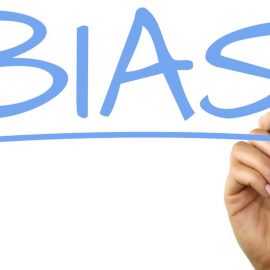

This article is an excerpt from the Shortform book guide to "Influencer" by Joseph Grenny, Kerry Patterson, et al.. Shortform has the world's best summaries and analyses of books you should be reading.
Like this article? Sign up for a free trial here.
What are critical practices? How can you identify critical practices to accomplish a goal?
According to the authors of Influencer, critical practices are the behaviors that need to change in order to accomplish a goal. While identifying them can be challenging, there are many ways to do so so you can reach success.
Let’s look at several strategies for finding and implementing a critical practice.
Identifying the Critical Practices
Having established a measurable goal, influencers must then identify the critical practices necessary to reach that goal. They must know what behaviors need to change to make their goal possible. In this section, we’ll define critical practices and discuss strategies for identifying the critical practices that will be most impactful in reaching your desired outcome.
While identifying the necessary behavior changes can seem overwhelming, the authors argue that there are usually one or two critical practices that have a disproportionate impact on the desired outcome. For example, if you wanted to minimize texting-related car accidents, a critical behavior might be placing cell phones out of reach while driving.
(Shortform note: While many agree that behavior change is a critical step in accomplishing long-term goals, there are different psychological theories about what causes long-term behavior change. For example, the theory of reasoned action suggests behavior change requires intention, shaped by attitude and social norms. The social cognitive theory on the other hand posits that personal ability and social learning prompt behavior change. Though there are subtle differences between these theories, most theories of behavior change point to the importance of individual ability and motivation and social influence as the key factors.)
Identifying critical practices can be challenging. The authors outline several strategies you can use to identify critical practices.
First, always start with the basics. Sometimes the critical practices are the most obvious ones. For example, 79% of people killed in bicycle accidents between 2010 and 2017 weren’t wearing a helmet, and yet a 2016 study revealed that 56% of participants said they never wear a bike helmet. Putting on a bike helmet before going for a bike ride is a critical practice that has a disproportionate impact on the number of fatal bike accidents.
(Shortform note: This suggestion is an example of the principle of Occam’s razor, which states that the simplest solution is probably the best one. The validity of Occam’s razor is up for debate, as critics of the concept argue that it values simplicity over accuracy.)
If you’re feeling stuck, look for the anomalies. If one person or institution is having success where many are failing, ask what they’re doing differently. For example, if one teacher in a school has significantly fewer classroom management issues than his colleagues, you might observe his class, and look for teaching practices he uses that aren’t being used in other classrooms.
(Shortform note: Anomalies have the potential to drive innovation, but they can be difficult to spot because they challenge our expectations. Because human brains are wired for pattern recognition, we easily filter out information that doesn’t fit patterns we’re used to. However, even though spotting anomalies doesn’t come naturally, psychologist Gary Klein suggests it’s a skill we can improve through practice and a commitment to open-minded curiosity.)
When attempting to implement a critical practice, consider your timing. The authors explain that identifying a critical practice isn’t just about identifying the right behavior, but identifying the right behavior at the right time. For example, experts say that when potty training children, the timing of when you introduce the new behavior is critical—too early and your child won’t be ready, too late and they’ll be harder to train.
(Shortform note: Daniel H. Pink elaborates on the importance of timing in his 2018 book When. Pink describes how humans’ capacity for focus and creativity changes depending on the time of day. Pink’s conclusions suggest that the timing of the introduction of critical practices matters down to the detail of the time of day.)It can also help to check for blind spots. Sometimes the critical practices are the ones that challenge the status quo. These behaviors can often be the hardest to initiate because they defy long-standing behavior expectations and often require changing the culture itself. For example, in the US, people say “I’m fine” when someone asks how they’re doing, regardless of how they’re actually feeling. Getting people to be honest about how they’re feeling would be a challenging norm to change.
Finally, the authors emphasize the importance of testing your hypothesis. Just because you’ve identified what you think is a critical practice doesn’t mean it’s the right one or the one that will have the impact that you hope for. Sometimes a well-intentioned critical practice has unpredictable outcomes. For example, as some companies have shifted to unlimited paid time off (PTO) policies to attract workers and address employee burnout, studies suggest that employees with unlimited PTO actually end up taking less time off. So as you’re attempting to implement critical practices, make sure the critical practice has the outcome you want it to.
(Shortform note: While the Influencer authors warn against undesirable unintended consequences, sometimes unintended consequences can have a positive outcome. For example, when disability advocates in the 1960s pushed for the broad implementation of ramped curbs on sidewalk corners (“curb cuts”), they didn’t anticipate how much the changes would also benefit the elderly, people pushing strollers, or travelers pulling roller bags. The response to the addition of curb cuts was so positive that it became known as “the curb cut effect”—the conclusion that disability-centered design is universally beneficial.)
The Challenge of Changing Culture
Sometimes the behaviors we need to change are the most difficult to see because they’re a part of the culture we live in, and culture is challenging to change because it’s built on shared values and belief systems. Not only do our values take time to evolve, but we’re often very attached to them.
In Atomic Habits, James Clear explains that to sustain the adoption of behaviors, the new behaviors must match your sense of self. He refers to three necessary layers of change—your goal, your habits, and finally your identity. This final layer encompasses all your opinions, beliefs, and assumptions about yourself and the world; therefore, the final layer isn’t only the most important, but also the slowest to evolve. Because culture change requires an evolution of values, and values are slow to change, culture change can’t happen quickly.

———End of Preview———
Like what you just read? Read the rest of the world's best book summary and analysis of Joseph Grenny, Kerry Patterson, et al.'s "Influencer" at Shortform.
Here's what you'll find in our full Influencer summary:
- A three-step guide on how to influence human behavior
- How to change the minds of those who are unmotivated to change
- How you can use the power of community connection to inspire people






